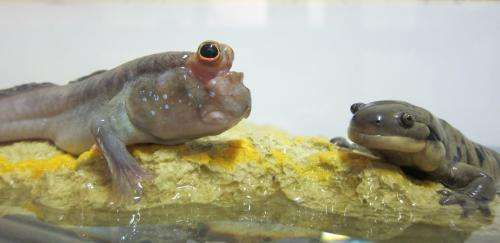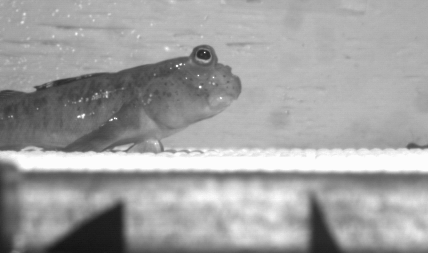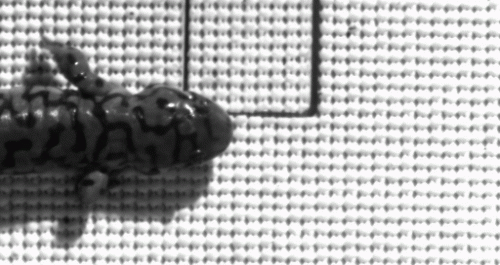The evolution of fins to limbs in the land invasion race

Why did animals with limbs win the race to invade land over those with fins? A new study comparing the forces acting on fins of mudskipper fish and on the forelimbs of tiger salamanders can now be used to analyze early fossils that spanned the water-to-land transition in tetrapod evolution, and further understand their capability to move on land.
Research conducted by Sandy Kawano and Richard Blob at Clemson University compared terrestrial locomotion in tiger salamanders and mudskipper fish, which have similar characteristics to early tetrapod ancestors.
The researchers filmed these organisms as they walked over a force platform which measures forces like a bathroom scale but separates them into 3 directions (upward, fore-aft, and side-to-side). They compared the forces experienced by the pectoral fins of the mudskipper fishes to the forelimbs and hind limbs of walking tiger salamanders. The results showed that that mudskippers' pectoral fins experience more medial forces than the limbs of salamanders, and that the forelimbs could have a played a similar weight-bearing role as the hind limbs.

Sandy Kawano said: "The transition from fins to limbs marks the most dramatic change in orientation of the locomotor forces from contact with the ground. Using these data we can now evaluate the locomotor capabilities of numerous important fossil taxa that spanned the water-to-land transition in tetrapod evolution. We hypothesise that the medial orientation of the forces on pectoral fins would result in unreasonably high bone stresses in early amphibious fish with fins, which would explain why the evolutionary invasion of land by vertebrates was accomplished instead by tetrapods with limbs with digits."

Paleontological examinations of the invasion of land by vertebrates suggest that limb-like appendages likely originated in aquatic environments, but direct comparisons of the functional consequences of using early limbs with digits, rather than fins, for terrestrial locomotion had not previously been performed. Salamanders are used to model the general body form of early tetrapods (e.g., Paleozoic amphibians) since their morphology has remained essentially unchanged for at least 150 million years. Mudskippers are similar to early fossil precursors of the tetrapods: they use "crutching" movements on land similarly to the hypothesised locomotion of Ichthyostega, and their pectoral fins are similar to elpistostegalids, such as Tiktaalik.
More information: This work will be presented at 13:30 on Saturday 6th July 2013.
Provided by Society for Experimental Biology


















